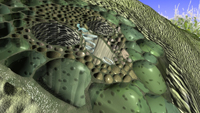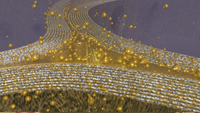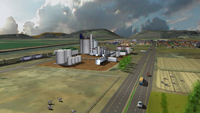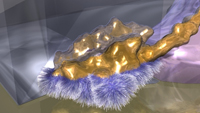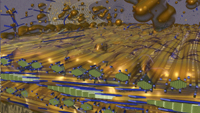
National Renewable Energy LaboratoriesSince the new millennium, Pixel Kitchen has worked closely with scientists at the National Renewable Energy Laboratories to visualize their research into the Cellulasic Ethanol refining process. We have created scientific imagery of the molecular processes, both the bio and thermal-chemical. We have illustrated with 3D modeling and animation, of the different refining systems as well as illustrating the fuel refining and distribution infrastructure. Pixel Kitchen's 3D image creation process is continuously being exploited by scientists at NREL to help visualize and focus their research through “visual what if's”. Additionally NREL has an enormous job of educating a wide range of audiences including government, industry, the public, and fellow scientists. PK has contributed substantial video production skills and techniques to help tell a very complex story. Political issues have recently confused this story. But this is not about using the part of the plant we use for food. It is about what is left over. Typical alternative to corn are switch grass and even wood from beetle kill trees. NREL is researching the refining process to make these resources more productive, commercially viable and cost effective with other less desirable energy sources. The cell walls of the corn stalk are composed, for the most part, of Cellulose, Hemi-cellulose, and Lignin. The Cellulose is where the majority of the energy is concentrated in the plant, but the Lignin surrounds and protects it. If we can expose the cellulose to enzymes and chemicals, we can learn to disassemble these components and release their hidden energy potential. Using enzymes similar to those in mushrooms living on fallen trees in the forest and using a process similar to beer brewing, we can make ethanol. The re-purposing of plant material, which previously would go to waste, while not substantially contributing to climate change, is a win win for planet earth. |

